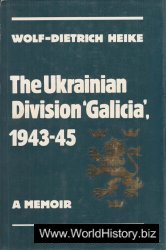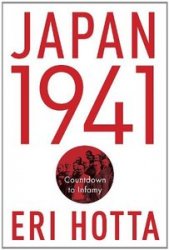Literacy was highly prized in ancient Egypt and was a sure guarantee of a significant position in the state administration. Given the vast number of inscribed temples, tombs, and statues that were a part of the landscape of ancient Egypt, it is surprising that literacy was relatively uncommon in ancient Egypt. Counting the occurrence of titles found in tombs associated with writing and extrapolating from these, it seems that a very low percentage of Egypt’s population was literate.
The percentage of literate people in Egypt changed over time, with a presumed increase in literacy occurring from the Early Dynastic to the Late Period. However, when calculating basic literacy, one must remember that the degree of literacy varies: some people might have been more adept at reading than writing, or vice versa (although this is more unusual), and some could perhaps do both, but at a rudimentary level, while others could merely sign their names. The titles associated with literacy skills implied a higher level of literacy than the minimum level of competence (i. e., to sign or recognize one’s name). A higher level of literacy was a prerequisite for those who wished to hold a significant position in the Egyptian bureaucracy. Titles—such as scribe, overseer, doctor, or priest, and so on—described those who were fluent in reading and writing, as well as numeracy.
There were possibly a significant number of individuals, such as itinerant professional letter writers, who were literate, but left little trace of their presence in the archaeological record. For example, the letters to the dead inscribed on papyri, or ostraka, and pottery vessels, might have been written by professional letter writers, such as are found in Africa and the Middle East today. Such people might have helped provide services for the illiterate, but might not have had the wherewithal to own rich inscribed tombs, and thus remain unmarked in the archaeological record. It has been suggested, however, that such services might have been rendered by low-level priests.
The site of Deir el-Medina, a Theban village, home of the New Kingdom workmen who carved and decorated the royal tombs in the Valley of the Kings, is a rich source of inscribed material. Evidence from the site indicates that many draughtsmen, quarrymen, and carpenters were literate. However, this village of artisans might have been the exception rather than the rule. At this point, evidence from other well-preserved workmen’s villages, such as the one at Tell el-Amarna, or the Middle Kingdom village of Lahun, does not provide parallels in the literacy levels or the inscribed finds of Deir el-Medina.
An increase in literacy over the course of Egyptian history might, in part, be due to the evolution of the language, as well as the composition of the population. In earlier Egyptian history (Old Kingdom), literacy was rare. The formulaic manner in which standard inscriptions (especially funerary) were expressed may suggest that many texts are derived from the oral tradition and could have been, with an initial prompting, “read,” or at least recognized by a large portion of the population. The discoveries of schoolchildren’s practice texts seem to indicate an increase in scribal schools after the First Intermediate Period. As the number of people to whom education became accessible increased, the literacy level rose. In the later part of Egyptian history—when demotic, the common cursive script, was used—it is quite probable that more members of the population were literate. Certainly, the amount of graffiti from the later periods of Egyptian history would support this, as the earlier graffiti consists primarily of crude petroglyphs, or vignettes virtually unaccompanied by text, while from the Late Period onward there is an increase in verbal graffiti. In fact, the largest number of texts are written in demotic; however, this might be due to an accident of archaeological discovery and preservation rather than to any real reflection of the amount of written material present at any one time.
The number of literary genres increased and diversified with time. It is unusual, however, that virtually no inscribed papyri (other than religious works such as the Book of the Dead) have been found in tombs. Given our knowledge that intact Egyptian tombs contained all that the living presumed the dead might need in the afterlife, it seems reasonable to assume that tombs might have contained works of fiction for light relief, or examples of the improving didactic literature of which the Egyptians were so fond. The majority of literary texts that have been recovered from ancient Egypt come from fragments found in temple areas and at town sites.
Both men and women were literate, although the majority of literate individuals were men. Despite the fact that elite women were literate, few held high positions in the bureaucracy (with the notable exception of the priesthood, which did employ female priests). Royal women and many noble women and priestesses were, presumably, able to read and write. In Egyptian literature, some women are depicted as being literate, and a major divinity and the patroness of writing is a goddess, Seshat. In general, women’s literacy might have been of a more rudimentary nature than that of men. However, the evidence gleaned from many demotic documents suggests that nonelite women who managed their own properties, as well as those of their male family members when they were absent, were literate. A significant amount of the evidence of female literacy, especially from the nonelite classes, comes from Deir el-Medina. However, there is little evidence of schools where women were commonly pupils; thus it is possible that women were taught literacy skills in temples.
Salima Ikram
See also: Egypt, Ancient: Hieroglyphics and Origins of Alphabet.
Further Reading
Baines, J. “Literacy and Ancient Egyptian Society.” Man n. s., 18 (1983): 572-599.
Baines, J. and C. J. Eyre. “Four Notes on Literacy.” Gottinger Miszellen, 61 (1983): 65-96.
Bryan, B. “Evidence for Female Literacy from Theban Tombs of the New Kingdom.” Bulletin of the Egyptological Seminar, 6 (1984): 17-32.
Eyre, C. and J. Baines. “Interactions betweeen Orality and Literacy in Ancient Egypt” in Literacy and Society, edited by K. Schousboe and M. Larsen. Copenhagen: Center for Research in the Humanities, 1989.
Janssen, J. “Literacy and Letters at Deir el-Medina” in Village Voices: Proceedings of the Symposium ‘Texts from Deir el-Medina and Their Interpretation’: Leiden, May 31-June 1,1991, edited by R. Demaree and A. Egberts. Leiden, 1992. Lesko, L. “Some Comments on Ancient Egyptian Literacy and Literati” in Studies in Egyptology: Presented to Miriam Lichtheim, edited by S. Israelit-Groll. Jerusalem, 1990. Lesko, L. “Literature, Literacy, and Literati” in Phawaoh’s Workers: The Villagers of Deir el Meddina, edited by L. Lesko. Ithaca, N. Y.: Cornell, 1994.
Velde, H. “Scribes and Literacy in Ancient Egypt” in Scripta Signa Vocis: Studies about Scripts, Scriptures, Scribes and Languages in the Near East Presented to J. H. Hospers by
His Pupils, Colleagues and Friends, edited by H. Vanstiphout. Groningen, 1986.
Wente, E. F. “The Scribes of Ancient Egypt” in Civilizations of the Ancient Near East, edited by J. M. Sasson, vol. 4, New York: 1995.




 World History
World History









